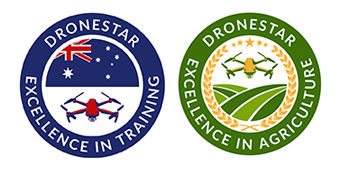Extended Visual Line-of-Sight (EVLOS), or Beyond Visual Line-of-Sight (BVLOS)?
Operations outside of Standard Operating Conditions (SOC's) under a Remote Operator's Certificate (ReOC) can feel a little daunting. So, let's talk the benefits of EVLOS over BVLOS for the majority of operations.
What is EVLOS?
EVLOS is essentially a very accessible BVLOS operation. To enable your organisation to operate EVLOS missions, all you need is approved EVLOS procedures in your operations manual as a ReOC holder. These procedures detail how you'll safely operate EVLOS missions and train your pilots internally - and maintain their 'currency'. Once approved, you can fly EVLOS missions whenever you like. No payment, no waiting. You can get the job done, unlike BVLOS operations that generally require approval for each individual mission, complex risk assessment, time and cost. EVLOS is further separated into two types. EVLOS 1 and EVLOS 2.
EVLOS 1 and EVLOS 2
EVLOS missions allow you to fly missions beyond your own (pilot's) visual line of sight, by having an observer located with you (EVLOS1) or at a distance away from you and at various positions along a flight route (EVLOS2), where visual orientation is handed over to each observer as the flight proceeds. Each observer must be able other visually see and orientate the aircraft.
EVLOS 1 missions do not require any additional pilot qualification other than being approved to fly EVLOS 1 under their respective organisations Operations Manual. EVLOS 2 missions also do not require any further formal qualification from CASA, unless that operation is in controlled airspace (Class C) and within 3nm of an active airfield. In these operations, the pilot, or crew member, must hold either the CASA Instrument Rating Exam (IREX) in manned aviation or the CASA BVLOS OCTA Exam. Yes, that doesn't make sense, but as of October 2025, this is the very latest operational info from CASA.
At Dronestar™, we can act as your crew member as we hold IREX.
The beauty of EVLOS missions, is that you can execute them at very short notice once you're EVLOS approved as a ReOC holder. No approvals are required other than the usual ones you'd need for any mission based on where it is.
BVLOS Operations
Beyond Visual Line of sight, is essentially the same as EVLOS from the Pilot's perspective - in that the aircraft is beyond the pilot's visual line of sight, but is being sighted by a trained observer. In BVLOS, this requirement is removed. The entire mission is flown by a single pilot (or team) either from Remote Operations Centre (ROC) or from a Ground Control Station (GCS) out in the field.
BVLOS is further separated into two types of flight. BVLOS in Class G Airspace (OCTA) and BVLOS - any airspace. In order to operate BVLOS in controlled airspaces (any airspace), the pilot, or a member on team must hold the CASA IREX exam pass in the same way as EVLOS 2.
Whatever you're looking to do, Dronestar™ not only have every capability in-house, including IREX, but we have courses that cover all advanced operations in EVLOS and BVLOS. Not only that, but we continually write and publish new procedures for EVLOS and BVLOS operations. These procedures are available to you for significant variation submissions to CASA. Just ask, and we'll manage the entire process for you. Want to know more or get EVLOS / BVLOS approved now? Please fill out the form below and shoot across to us.
BVLOS / EVLOS Services Enquiry
EVLOS and BVLOS Operations
Excellence in Uncrewed Training



